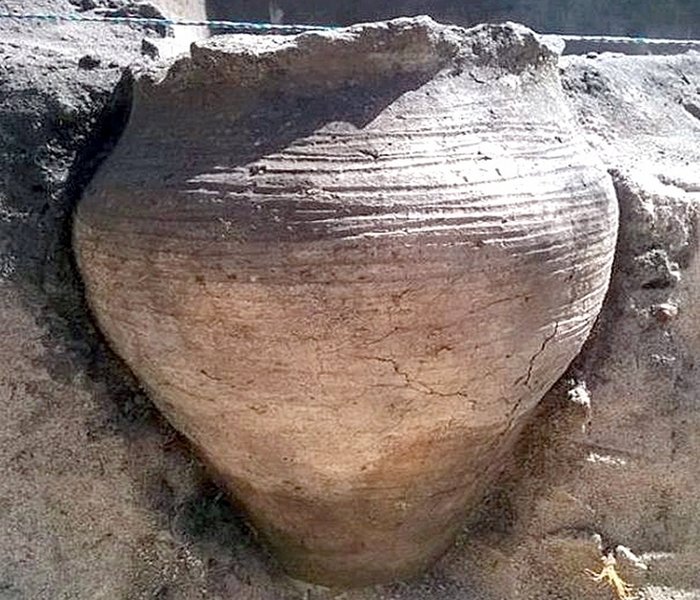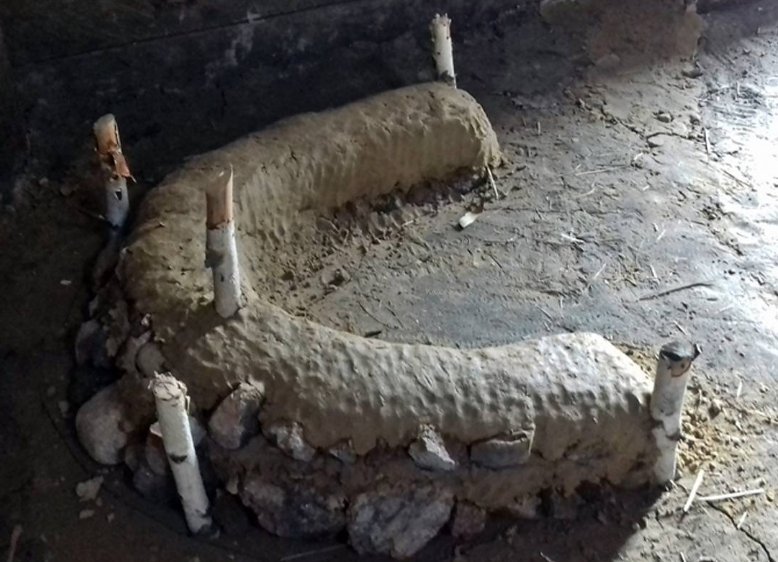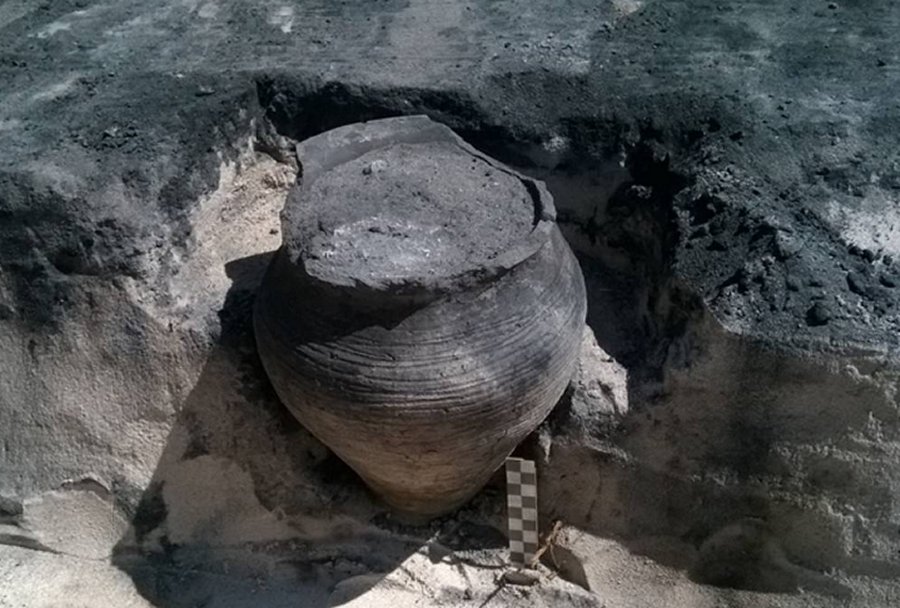Extraordinary Discovery: Clay Vessel With Sour Soup For The Gods Found In Medieval Hut
AncientPages.com - More than thousand years ago, superstitious inhabitants placed a clay pot with a sour soup, under the floor of their hut. It was their sacrificial offering to the gods.
This surprising discovery was made in the 10th century cottage located near the Żmijowiska fortress, Lublin Province, Poland, while archaeologists worked with reconstruction and relocation of medieval hut, which was under constant danger of being flooded.
“The cottage was big. It measured 5 at over 4 meters in length and was deep enough to be dug into the ground” says Paweł Lis from the Museum of Vistula River in Kazimierz Dolny, to which a fortification belongs.
"As the place abounds with medieval relics - in consultation with the conservator of monuments - we started excavations. To our surprise, exactly where we wanted to place the reconstruction, we came across a more than a thousand years old original structure!" - added Lis.

A large clay pot contained fragments of cultivated crops: cereals (barley, millet, wheat), lentils and wild plants: saltbush, knotweed, sorrels, field mint. There were large amounts of white goosefoot (pigweed). Image. P. Lis
The planned reconstruction was almost identical in size and was erected in a similar way to that over 1,000 years old.
Next to the entrance to the hut (located in the eastern wall) was a kitchen stove made of clay and granite stones. For the construction of its walls, advanced construction techniques were used: log and chip-and-lathe.

Next to the entrance to the hut was a kitchen stove made of clay and granite stones. For the construction of its walls, advanced construction techniques were used: log and chip-and-lathe. Image: P. Lis
“The owners of the cottage were very anxious about the welfare of the caring deities. Underneath the floor, they dug up a clay victim - a clay pot - says the archaeologist.
Analysis of the remains of plants found in the pot revealed fragments of cultivated crops: cereals (barley, millet, wheat), lentils and wild plants: saltbush, knotweed, sorrels, field mint. There were large amounts of white goosefoot (pigweed).
"The dish - a typical, rich in proteins Slavic food - offered to house deities could be a sour soup based on white goosefoot with added saltbush, knotweed and sorrels, thickened with lentils, barley, and millet and wheat groats and seasoned with mint. The latter goes well with lentils" - said Lis.
The archaeologist believes that the dish could have been cooked in late spring or summer - taking into account the seasonality of the ingredients.
Inside the hut, researchers discovered the remains of more than ten types of ceramic pots - at least five of which will be fully reconstructed. In addition, there were many weaving looms, glass beads and items made of animal horns and antlers.
The fortress in Zmijowiska was built at the end of the 9th century. The Slavs built it in the place of an ordinary settlement. The fortress functioned until the mid-10th century, when it was burned down, possibly by Ruthenians, a Slavic people from Southern Russia, Galicia and Bukowina in Austria, and North-eastern Hungary, who once also inhabited Lublin province in Poland.
AncientPages.com
Expand for referencesReferences:






















